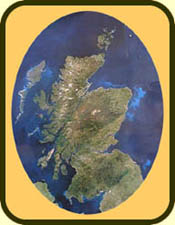Glen Flagler / Glenflagler / Killyloch whisky
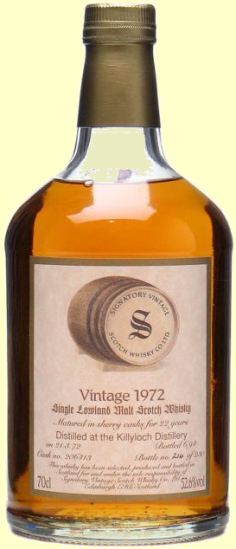
Glen Flagler / Killyloch / Islebrae Distillery Profile

1) The name of the Glen Flagler distillery is sometimes spelled as Glenflagler as well.
2) The water source for Glen Flagler / Killyloch was the Lily Loch - a reservoir which was created in 1836 by increasing the size of an already existing small loch. The project was financed by the owners of the Forth and Clyde Canal with the purpose to supply this canal with water via the North Calder Water and the Monkland Canal. Subsequent owners of the Lily Loch were the Caledonian Railway Company, the London Midland Scottish Railroad and British Waterways Scotland. At the moment the Lily Loch is used by the Clarkston Angling Club.
3) While the Glen Flagler distillery was active, it had the biggest mash tun in Scotland, made of stainless steel.
4) The first official international football match was played not far from the location of the Glen Flagler distillery, at the West of Scotland Cricket Club in Partick in 1872, between Scotland and England.
5) Glen Flagler and Killyloch are probably the 'distilleries' with the fewest entries on the MMMonitor.
In March 2009 they had just seven entries between the two of them in our whisky database and in later years just a handful of expressions were added;
Glen Flagler NAS (40%, OB, Medieval label, Import House Milan)
Glen Flagler NAS (70 Proof, OB, Black & red shield label, 1970's, 1 2/3 Fl. Oz.)
Glen Flagler 29yo 1973/2003 (46%, OB, 931 Bts.)
Killyloch 1967/2003 (40%, OB, 371 Bts.)
GlenFlagler 23yo 1970/1994 (50.1%, Signatory, D., C#1260+7861, 350 Bts., D. 10/'70 Btl. 05/'92)
Glen Flagler 23yo 1972/1996 (51.3% Signatory, C#228442, 255 Bts.)
Killyloch 22yo 1972/1994 (52.6%, Signatory, C#206413, 230 Bts.)
6) The production of the Killyloch and Islebrae malt whiskies ceased in 1970.
That means that both single malts were only produced for five years. Glen Flagler was produced until 1985.
Glenflagler 23yo 1970/1994 (50.1%, Signatory Vintage, Casks #1260+7861)
Nose: Starts out very flat and restrained but opens up. Spicier with time. Dill & tarragon.
Taste: Sweet with a faint herbal undercurrent. The herbal element grows stronger over time.
Score: 79 points - which is quite impressive given the herbal side. The nose has a lot to offer.
Glen Flagler NAS (70 Proof, OB, Black & Red shield label, 1 2/3 Fl Osz., Bottled 1970's)
Nose: Light and subtle, but with some substance. Slightly farmy. Would have been better at higher proof.
Taste: Malty, coffee. Feels almost below 40% at first, but powers up. Unbalanced. Woody. Dry. Tannic.
Score:
75 points - but I imagine some oxidation may have affected the contents of the bottle here.
And there's more to tell about Glen Flagler / Killyloch / Islebrae...
These were all (official & independent) bottlings of Glen Flagler Scotch whisky I've tried over the years.
Furthermore, these tasting notes only reflect my own, personal opinion; your tastes might be different from mine.
Fortunately, you can find the scores and tasting notes from up to two dozen other whisky lovers in the 'Malt Maniacs Monitor' - an independent whisky database
with details on more than 15,000 different whiskies from Scotland and the rest of the world. Visit the Glen Flagler page on the MMMonitor and select 'scorecard view' if you want to know
how other whisky lovers felt about the handful of of Glen Flagler expressions that were released in recent years. However, if you'd like to learn more about whisky in general (and single malt Scotch whisky
in particular), you might want to check out the Beginner's Guide to Scotch whisky (10 chapters filled with everything you need to fully enjoy
and appreciate a glass of single malt whisky) or the mAlmanac (sort of a rudimentary whisky shopping guide.)
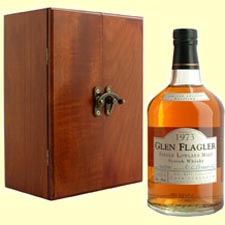
Glen Flagler Scotch Whisky
Glen Flagler / Killyloch / Islebrae
Lowlands
55°51'41.22"N, 3°55'31.14"W
Kinclaith, Rosebank, Littlemill, Saint Magdalene
1965
Closed in July 1985, stills removed & buildings demolished
Lily Loch
2 Wash stills, 2 Spirit stills (1 set reserved for Killyloch)
Unknown
Pacific Spirits > Inver House
Tower Road, Moffat, Airdrie, North Lankashire, M6 8PL
-
No
No
No
Below, on WhiskyFun and on the Malt Maniacs Monitor
Name:
Region:
GPS location:
Neighbours:
Founded:
Status:
Water source:
Equipment:
Production capacity:
Ownership:
Address:
Telephone number:
Visitor centre:
Website:
Official bottlings:
Scores & tasting notes:
Meanwhile, they also kept producing the Garnheath grain whisky and I did
have the pleasure of sampling some of it. The father of fellow malt maniac
Olivier Humbrecht had obtained a cask in the past and bottled it for charity
some time ago. Olivier brought a bottle to Scotland during one of our
maniacal trips and a few of us enjoyed a few drams along the banks of the
river Ness - in Inverness and near Loch Ness. Very excellent grain whisky!
Anyway, there's not much more that
I can tell about Glen Flagler
and
Killyloch from personal experience.
I haven't visited the distilleries yet
and I have sampled only two
expressions of Glen Flagler, both
scoring in the 70's. That's not too
bad - but not impressive either...
So, Glen Flagler really is one of
those 'brands' that are mostly
interesting for collectors
and not
so much for the real 'drammers'
who are looking for the best whisky.
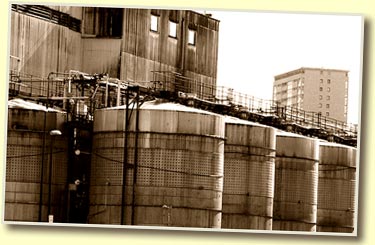
The Glen Flagler and Killyloch 'distilleries' were not
traditional buildings like Auchentoshan or Glenkinchie,
but sets of stills within another distillery - in this case
the Moffat grain whisky distillery, East of Glasgow.
Built in 1965 by Inver House Distillers within the Moffat
grain distillery complex, Glenflagler was located closer
to England than most other Scottish distilleries. The
distillery complex had three sets of two stills, each of
which was producing their own type of whisky - two
single malt whiskies (by the names of Glen Flagler and
Killyloch) and a
grain whisky
named Garnheath. The
Killyloch stills ceased production in the early 1970's,
Glen Flagler and Garnheath followed a decade later.
But I'm getting ahead of myself; perhaps it would be
better to start at the beginning of the story...



Glen Flager had already enjoyed a previous existence as the Moffat paper mill when the buildings were purchased by the American company Publicker Industries in 1964. Many of the buildings were rebuilt and new equipment was added in order to start the production of grain whisky in 1965. Although the original objective was to produce grain whisky for the Inver House blends, the plans were soon expanded to include malt whisky.
So, apart from a column stills and other equipment that was required
to produce the Garnheath grain whisky
for the various Inver House
blended whiskies, additional pot stills were added in order to produce
malt whisky in the complex as well.
Because many of today's whisky companies are not really interested
in the history of defunct distilleries (there's simply not much money to
be made off them), it's difficult to find precise
details about the three
brands of malt whisky that were made within the complex. So, I do
know that they used to produce Glen Flagler, Killyloch and Islebrae
malt whisky in the Moffat distillery complex, but I'm not entirely sure
which of the four copper pot stills were used for which variety.
My best guess is that one set of stills (1 wash still and 1 spirit still)
was used to produce the Glen Flagler malt whisky while the other
was used for Killyloch. Research by malt maniac Robert
Karlsson has
shown that the Glen Flagler malt whisky was unpeated, while the
whisky produced in the Killyloch stills was very lightly peated with a
PPM around 3. The significantly more peated
Islebrae malt whisky
was produced in the set of stills that was also used for Killyloch.
These pot stills were taken out of commission
in 1970; after that
time only Glen Flagler was produced at the Moffat distillery complex.
The Moffat distillery once housed Europe's largest commercial maltings,
but nowadays all of the equipment seems to be dismantled.


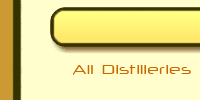
|
|
|
|
|
DD Overview |
|
|
|

